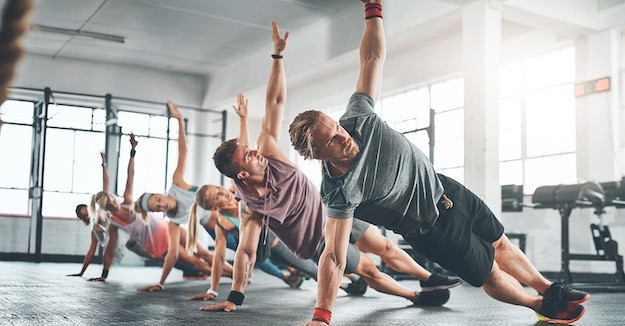
FREQUENCY OF LEARNING
“The number of times a muscle group was trained over a period of time” is known as training frequency. Currently, one of the conditions is that experts in the field give them the best results to achieve maximum results
-
What is SCIENCE telling us?
FREQUENCY OF LEARNING 1 vs 6 weeks
Science currently indicates that there is no significant difference in muscle hypertrophy results when comparing training volume.
Given these results, we would make a reflection, then everything works? Obviously not, in fact, the key is to find the optimal path to maximize profits. While training frequency is a very interesting variable, we must realize that the distribution of training volume over a very large number of training sessions will result in the body not having enough stimulus to generate fatigue at the musculoskeletal level to test supercompensation.
-
What does EXPERIENCE tell us?
In recent years I have had the good fortune to experiment with a very large number of subjects where I was able to test high combinations at the level of training frequency.
Many are waiting for the magic combination to achieve maximum results in a SHORT PERIOD OF TIME, and this is where most subjects fail, we forget that training is a CONTINUATION where the subject develops his sports career, therefore, over many years of training to maximize results and use a variable LEARNING RATE, the best way to organize it will depend on the level of the athlete.

What training frequency do I use based on the level of the athlete?
- Beginner athletes: repeating a sports gesture more times a week is the most interesting way to focus our training, we must understand that in order to maximize motor ability, a gesture with a high technical component of the subject, the more times he can repeat a gesture without fatigue , the better its adaptation at the neural level. BUT EYE This does not mean that we have to train all muscle groups on a daily basis, but IF IS INTERESTED to perform a motor gesture with routine exercises 2 to 3 times a week or a similar body working the same in different planes of motion, which allows us to improve motor learning and control over the body in different planes.
- Intermediate athletes: will increase the training frequency for each muscle group in the technique / strength phase, where the goal will be to repeat the movement more times, working with loads, the progression of loads from movement to speed is controlled in the technical phase for the movement applying maximum force, trying to improve RFD or force production per unit of time In the hypertrophy phase, it would be more interesting to reduce to a certain extent from 3 to 2, even once a week, the frequency of training per muscle group, with an emphasis on rest and training the muscles when they are at optimal conditions.
I personally consider myself an intermediate athlete, throughout my hypertrophy phase I have experienced this at a frequency of 2x weeks, but that changes when I focus on the technical phase where I was able to repeat the movement up to 4x weeks. So by knowing how to periodize your workouts and create progress from the start of your workout at the gym, increase your incentives as your level of training rises.
- Advanced lifters: I believe that an experienced lifter is one who has very high training performance, he is able to lift loads exceeding his weight by 1.5 times in the bench press, more than 2 times in squats. and 2.5 times deadweight.
When we create programming for an advanced athlete, we usually make the mistake of trying to maximize all training variables, depleting their adaptability and creating declining adaptations. We must understand that the greater the load, the more time it takes for a person to recover and overcompensate from a strong training stimulus than for beginners or intermediate athletes.

A very important point at this level of learning is the ability to CREATE A HIGH BALANCE during most of your year of programming, upsetting that balance to try and create superior adaptations.
THE NATURAL ATHLETE GETS BEST RESULTS WHEN IT CREATES BALANCE STATE.
At the first stage of programming, the training frequency can be ideal: 3 times a week with basic movements with loads not associated with muscle failure, which allows us to focus as much as possible on the contact points, avoiding sticking points in the later stages, overcoming with easier apply a lot of force to the bar for most of the movement.
During the hypertrophy phase and as we approach muscle failure, it would be interesting to reduce the training frequency by increasing the volume per session to make each workout HIGH PERFORMANCE and get the most muscle development benefits along with it, the main goal of this phase. … However, in those muscle groups that are missing, it would be interesting to introduce where we create reminders that increase the frequency per week in order to pay more attention to these muscle groups.
As a result:
- No significant difference in terms of training frequency when volume equals.
- For beginner athletes, higher training frequencies allow us to learn more about motor gesture and basic exercise control.
- Intermediate athletes have higher training frequencies in the technique / strength phase, who try to decrease the frequency and distribute the volume in fewer sessions, emphasizing rest.
- For advanced athletes, during the strength / power phase, the frequency may be higher when working with buffers that do not allow reducing tension in the joints, gradually increasing the load. In the hypertrophy phase, reduce the frequency of training, highlighting where we will increase it to achieve more development of this muscle.
